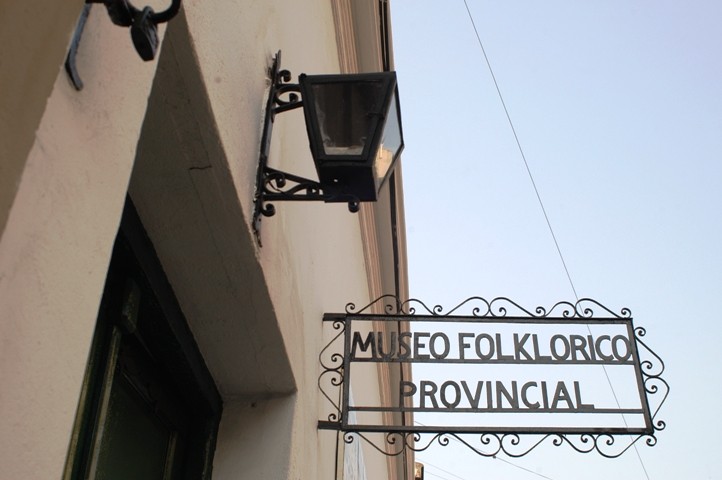This museum was built around 1730. It is one of the oldest architectural buildings in the north of Argentina. Felipe Martínez de Iriarte priest bequeathed it. He founded a chaplaincy in 1760. Years later, Colombres Bishop lived there during the days he was sick.
In 1929, the provincial government obtained the property and changed it into the Police Museum. Finally, The Folk Museum opened in 1943.
There are several colonial patios in the house. This “colonial” distribution was well-known in Latin America. However, nowadays only half of the original house remains. Both the façade and the back gallery have a different architectural style post May Revolution. The house was declared National Historical Museum in 2001.
The art exhibition in the museum includes popular and folk handcrafts from Tucumán and other northern provinces. A wide variety of elements from different material and origins are exhibited as part of the importance and quality of the no industrialized production. Some of them are carving wooden items and leather and clay objects. They were made by indigenous Chané. There are also luxurious silver creole cutlery of religious and everyday life uses, for instance, “mates” and jars.
The textile collection includes lace trimmings from Monteros Town, as well as, tapestry, carpets, blankets, horse blanket, and ponchos. Some musical instruments are percussion boxes, leguero drums, anatas, indian flute, sikus, erkes, small guitar (charango) and harps. They all were made with pre-Hispanic and Hispanic techniques. Besides, these instruments are still used in popular celebrations.
There is a special room to honour Mercedes Sosa. She was a very famous folk music artist of the province.
Address: 565, 24 de Septiembre Street - San Miguel de Tucumán
Telephone: +54-9-381-4218250
E-mail: museofolklorico.tucuman@gmail.com
Web site: http://www.enteculturaltucuman.gov.ar
In 1929, the provincial government obtained the property and changed it into the Police Museum. Finally, The Folk Museum opened in 1943.
There are several colonial patios in the house. This “colonial” distribution was well-known in Latin America. However, nowadays only half of the original house remains. Both the façade and the back gallery have a different architectural style post May Revolution. The house was declared National Historical Museum in 2001.
The art exhibition in the museum includes popular and folk handcrafts from Tucumán and other northern provinces. A wide variety of elements from different material and origins are exhibited as part of the importance and quality of the no industrialized production. Some of them are carving wooden items and leather and clay objects. They were made by indigenous Chané. There are also luxurious silver creole cutlery of religious and everyday life uses, for instance, “mates” and jars.
The textile collection includes lace trimmings from Monteros Town, as well as, tapestry, carpets, blankets, horse blanket, and ponchos. Some musical instruments are percussion boxes, leguero drums, anatas, indian flute, sikus, erkes, small guitar (charango) and harps. They all were made with pre-Hispanic and Hispanic techniques. Besides, these instruments are still used in popular celebrations.
There is a special room to honour Mercedes Sosa. She was a very famous folk music artist of the province.
Address: 565, 24 de Septiembre Street - San Miguel de Tucumán
Telephone: +54-9-381-4218250
E-mail: museofolklorico.tucuman@gmail.com
Web site: http://www.enteculturaltucuman.gov.ar
